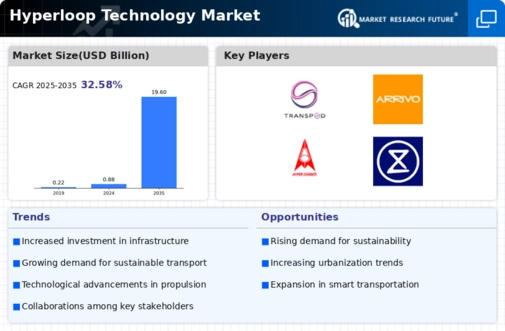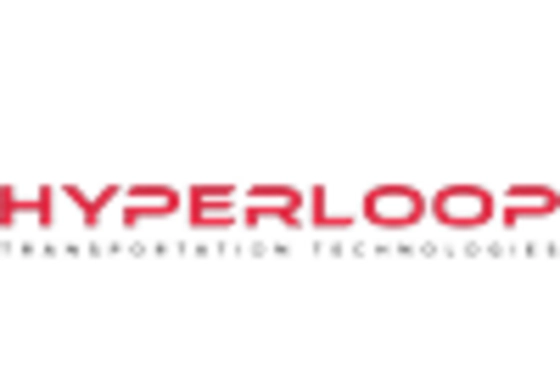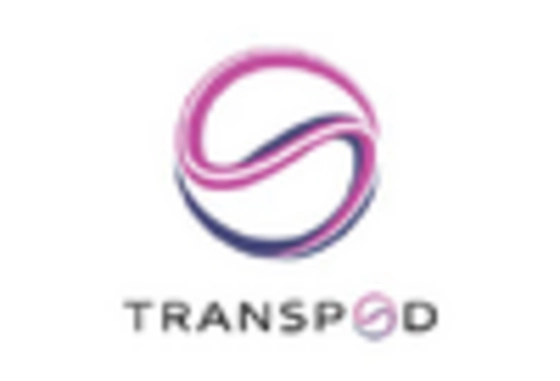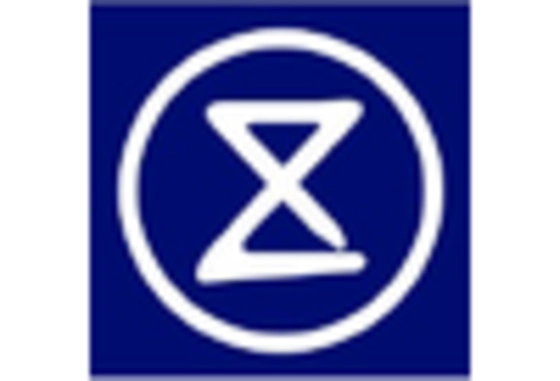Urbanization and Population Growth
Urbanization and population growth are significant factors influencing the Hyperloop Technology Market. As cities expand and populations increase, traditional transportation systems often struggle to meet the rising demand for efficient transit solutions. Hyperloop technology offers a potential remedy by providing high-speed travel between urban centers, thereby alleviating congestion and reducing travel times. Reports suggest that urban areas are projected to house over two-thirds of the world's population by 2050, intensifying the need for innovative transportation infrastructure. The Hyperloop Technology Market may capitalize on this trend by positioning itself as a modern alternative to outdated transit systems. By connecting major urban hubs, Hyperloop could facilitate economic growth and improve accessibility, making it an attractive option for city planners and policymakers.
Technological Innovations and Advancements
Technological innovations are a driving force behind the Hyperloop Technology Market. Continuous advancements in materials science, propulsion systems, and vacuum technology are enhancing the feasibility and efficiency of Hyperloop systems. For example, the development of lightweight materials can reduce energy consumption and improve overall performance. Additionally, innovations in magnetic levitation and linear motor technologies are expected to enable faster and more reliable travel. The Hyperloop Technology Market may also benefit from the integration of smart technologies, such as real-time data analytics and automated systems, which can optimize operations and enhance passenger experience. As these technologies evolve, they could lead to a more competitive and attractive transportation option, appealing to both investors and consumers.
Government Support and Regulatory Frameworks
Government support plays a crucial role in the development of the Hyperloop Technology Market. Various nations are actively exploring regulatory frameworks that facilitate the implementation of Hyperloop systems. This support often manifests in the form of funding, research grants, and favorable policies aimed at promoting innovative transportation solutions. For instance, some governments have initiated pilot projects to test Hyperloop technology, which could pave the way for broader adoption. The establishment of clear regulations and safety standards is essential for gaining public trust and ensuring the successful deployment of Hyperloop systems. As governments recognize the potential economic benefits and job creation associated with Hyperloop projects, the industry is likely to see increased investment and collaboration, further propelling its growth.
Investment Opportunities and Economic Growth
The Hyperloop Technology Market presents numerous investment opportunities that could stimulate economic growth. As interest in high-speed transportation solutions rises, private investors and venture capitalists are increasingly looking to fund Hyperloop projects. The potential for high returns on investment, coupled with the promise of job creation in engineering, construction, and operations, makes Hyperloop an appealing prospect. Furthermore, the development of Hyperloop systems could lead to increased tourism and commerce in connected regions, further enhancing economic prospects. Reports indicate that the transportation sector is a key driver of economic activity, and the Hyperloop Technology Market may play a pivotal role in shaping the future of transit. As more stakeholders recognize the economic benefits associated with Hyperloop, investment is likely to surge, propelling the industry forward.
Growing Demand for Sustainable Transportation
The Hyperloop Technology Market appears to be driven by an increasing demand for sustainable transportation solutions. As urban populations expand, the need for efficient and eco-friendly transit options becomes more pressing. Hyperloop technology, with its potential to reduce carbon emissions significantly compared to traditional rail and air travel, aligns well with global sustainability goals. Reports indicate that transportation accounts for a substantial portion of greenhouse gas emissions, prompting governments and organizations to seek innovative alternatives. The Hyperloop Technology Market may benefit from this shift, as stakeholders recognize the importance of reducing environmental impact while enhancing connectivity. Furthermore, the integration of renewable energy sources into Hyperloop systems could further bolster its appeal, making it a viable option for future transportation networks.


















Leave a Comment